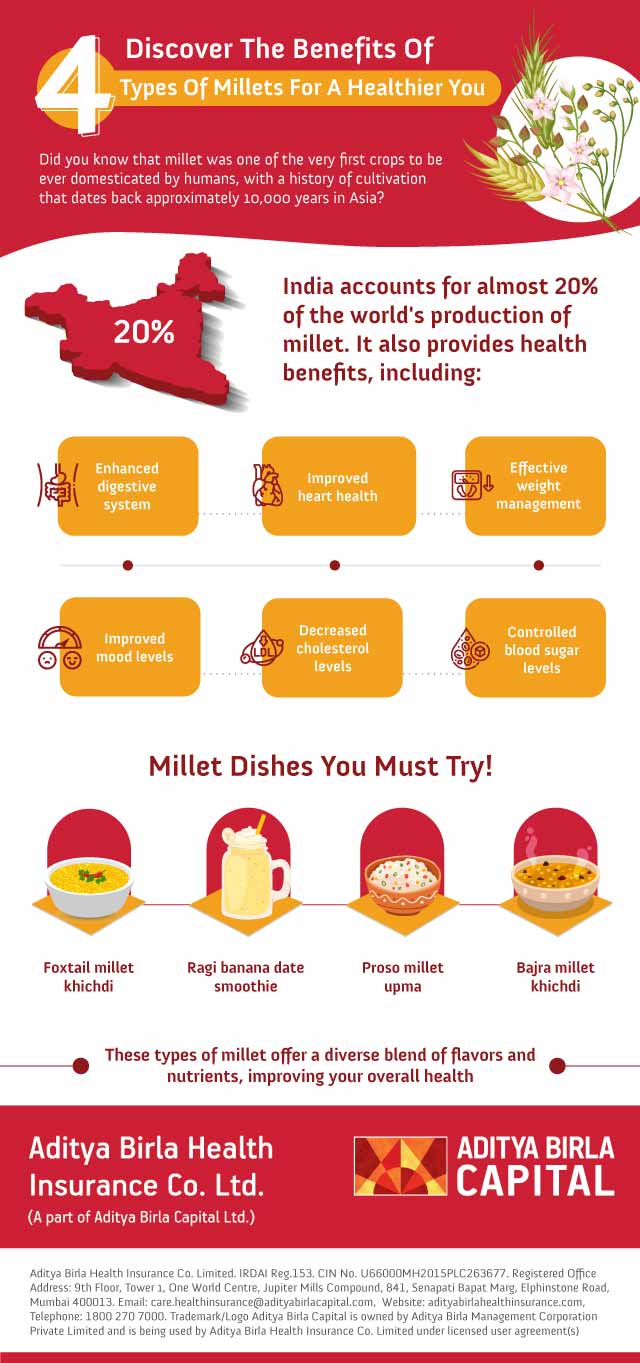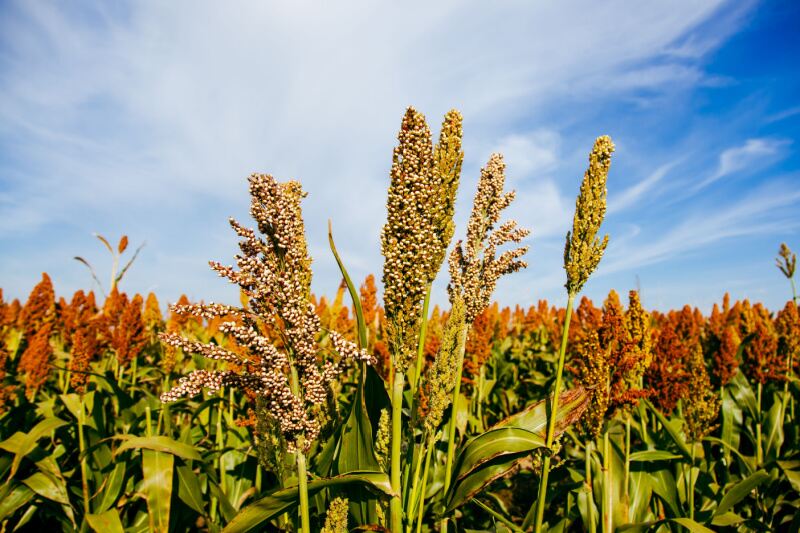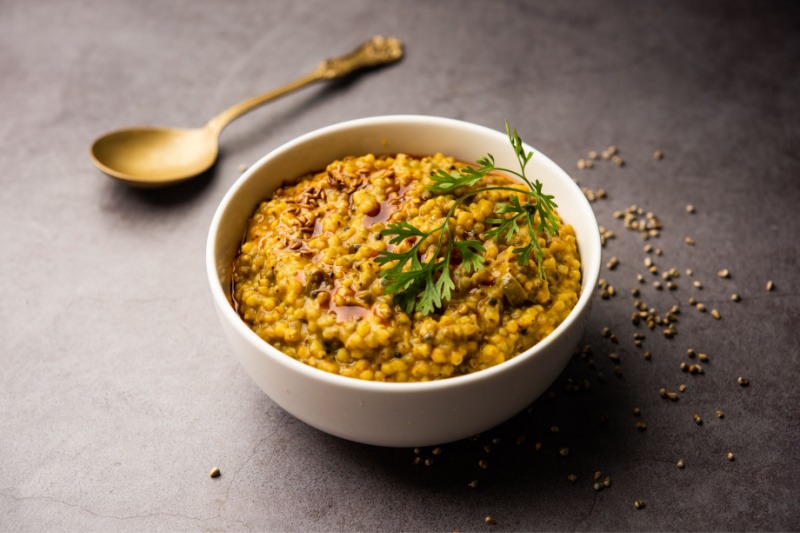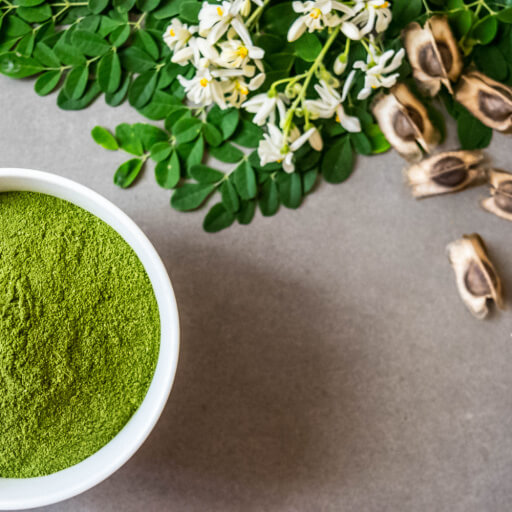
In today’s world of making health-conscious decisions, health and overall wellness have become a lifestyle. This is why several nutritional food products, including various types of millet, oats, and other cereals, are gaining worldwide recognition. They do not contain gluten, enabling you to manage health conditions like diabetes. There are several types of millets that you can consume to get different types of nutrients and calories.
What you need to know:
- What are millets: A nutrient-rich grain
- The nutritional powerhouse
- Why choose millets?
- Types of millets: A guide to the primary varieties
- Millets – A superfood for a balanced diet
What are millets: A nutrient-rich grain

Millets are a type of cereal that belongs to the Poaceae variant, known as the grass family. They are mostly cultivated and consumed in Asia and Africa. Various types of millets are widely popular as a part of a healthy diet plan, as they are rich in vital micronutrients like fiber, protein and antioxidant content.
The nutritional powerhouse
Here is the nutritional content of millets as per 1 cup (174 grams) of cooked millet:
- Calories: 207
- Carbohydrates: 41 grams
- Protein: 6 grams
- Fiber: 2.2 grams
- Phosphorus: 25% of DV (daily value)
- Magnesium: 19% of DV
- Iron: 6% of DV
- Folate: 8% of the DV
Millets are also full of amino acids than most types of cereals. These compounds are the smallest units of proteins. In addition, millets especially Ragi also known as finger millet are also very rich in calcium content, providing 13% of the daily required intake per 100 grams of millet.
Why choose millets?
Gluten-free and easily digestible
Millets are generally easy to digest as compared to other grains. Gluten is a protein that occurs naturally in grains like wheat, barley, and rye. You must avoid it if you have gluten sensitivity. Millet is a superfood for you if you follow a gluten-free diet. They are rich in dietary fiber, both soluble and insoluble. The insoluble fiber is a prebiotic, which means it supports good bacteria in your gut. The fiber also helps in excretion, keeping it regular and reduces your risk of colon cancer.
Rich source of protein and fiber
Millets are high in nutrition and dietary fiber. Dietary fiber in millets has water absorbing and bulking properties. It increases transit time of food in the gut which helps in reducing the risk of inflammatory bowel disease and acts as a detoxifying agent in the body. Millets serve as a good source of protein and micronutrients including calcium, iron, phosphorus, etc. They contain 7-12% protein, 2-5% fat, 65-75% carbohydrates and 15-20% dietary fiber.
Potential health benefits
Millets are full of soluble fiber, which trap fat in your gut and can lower the cholesterol level in your blood. That can help reduce your chances of heart disease. Millets are good sources of magnesium, too, which may prevent heart failure. Millets can help keep your blood sugar from spiking after you eat. They are a good whole grain, especially if you have type 2 diabetes.
Types of millets: A guide to the primary varieties

Here are the different types of millet that you can add to your diet to enhance your overall health:
Finger millet (ragi)
Finger Millet, or ragi, is a favorite among fitness experts who choose healthier alternatives to traditional grains like rice or wheat. Not only is it rich in calcium, but it also has a healthy amount of iron and other essential minerals. This is why consuming ragi millets benefits young children, as it supports brain development.
Pearl millet (bajra)
Pearl millet, or bajra, is enjoyed in various dishes, from roti (a type of flatbread) to khichdi (a rice and lentil dish). Bajra is a nutrient powerhouse, providing a good amount of iron, fiber, protein, and essential minerals like magnesium and calcium. Making pearl millet a part of your regular diet can improve your overall health significantly.
Foxtail millet (korralu)
Foxtail Millet, referred to as korralu in India, is found in the form of rice flour. This type of millet is rich in carbohydrates, which play a crucial role in maintaining balanced blood sugar levels within the body. Additionally, it has a high iron content. Incorporating this millet type into your diet can enhance your overall immune system.
Proso millet (baragu)
Proso millet, or baragu millet, is a popular grain widely cultivated and consumed across the country. This millet is packed with Niacin (Vitamin B3), an essential nutrient known to prevent Pellagra, a skin disorder characterized by dry, scaly, and rough skin. Also, it is rich in magnesium which helps in reducing the risk of type–2 diabetes. Including Proso millet in your diet can help maintain healthy skin and improve overall well-being. Baragu also contains Lecithin, a compound that ensures smooth brain activity by stimulating it indirectly.
Millets – A superfood for a balanced diet
Millets offer many health benefits, making them an excellent addition to your balanced diet. These small-seeded grains are rich in essential nutrients. Their high fiber content can aid your digestion, promote satiety, and help regulate your blood sugar levels, making them an ideal choice to manage your diabetes and weight.
Millets are also gluten-free and suitable for you if you have celiac disease or gluten sensitivities. They are versatile in culinary applications, and you can easily incorporate them into various dishes such as porridge, salads, soups, etc. The antioxidants present in millets can help combat oxidative stress and reduce inflammation, contributing to your overall health and disease prevention.
Incorporating millets into the diet supports sustainable agriculture, as these grains require less water and are more resilient to harsh growing conditions compared to rice and wheat. This makes them environment friendly. In conclusion, millets stand out as a nutrient-dense, gluten-free, and sustainable superfood. Experiment and choose the right types of millets in your diet to enhance your overall health and well-being.
Stay tuned to the Activ Living Community. Keep up to date with the latest health tips and trends through expert videos, podcasts, articles, and much more in nutrition, fitness, mindfulness, and lifestyle conditions like Asthma, Blood Pressure, Cholesterol, and Diabetes. Activ Living ke saath sahi sehat ki shuruaat ABHIkaro.
You may also be interested in the following blogs:
- How Does Insulin Therapy Make Life Easier For People With Diabetes?
- Sedentary Lifestyle And Diabetes: Transform Passive Life To Active Life
Popular Searches
How to lower blood pressure | Fruits good for liver | Unhealthy foods | Ragi Benefits | Basal Metabolic Rate | Acupressure points for High Blood Pressure | Ayurvedic medicine for blood pressure | How to control cholesterol at home | Homeopathy for Asthma | Biological Age | Home remedies for TB | Natural beta blockers | Negative effects of internet | Types of walking | Blood pressure calculator | Blood sugar calculator | BMI Calculator





 1800-270-7000
1800-270-7000






